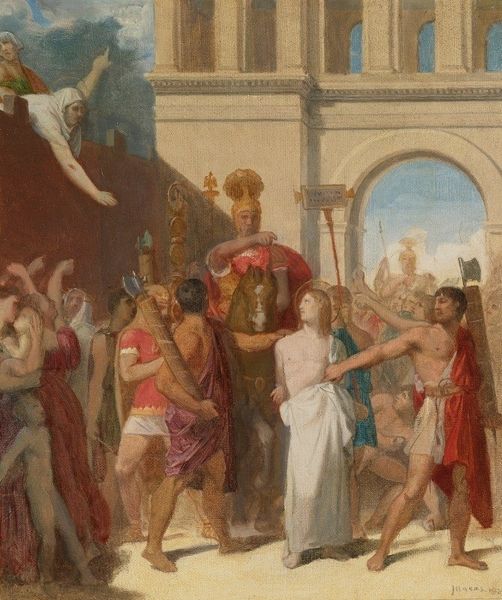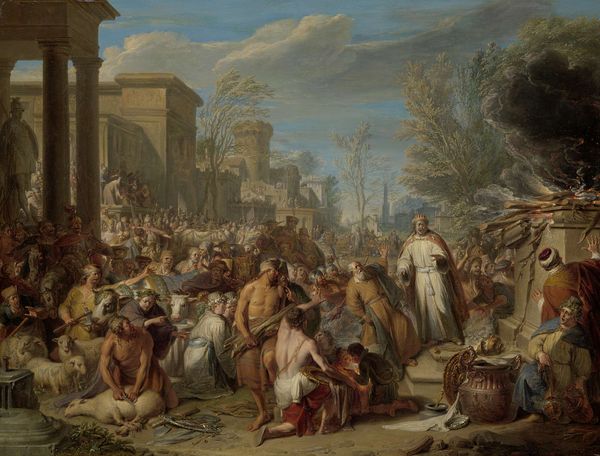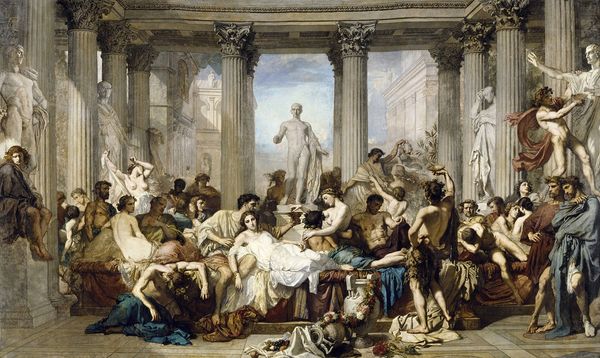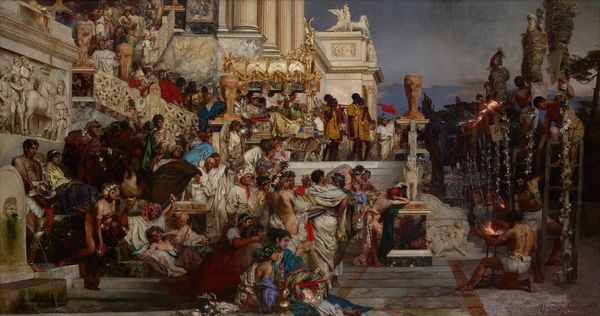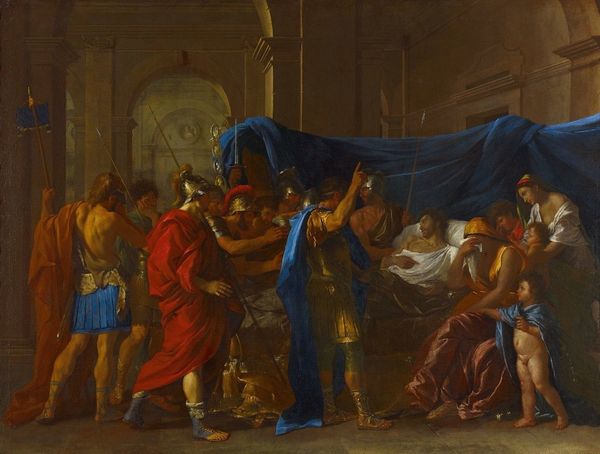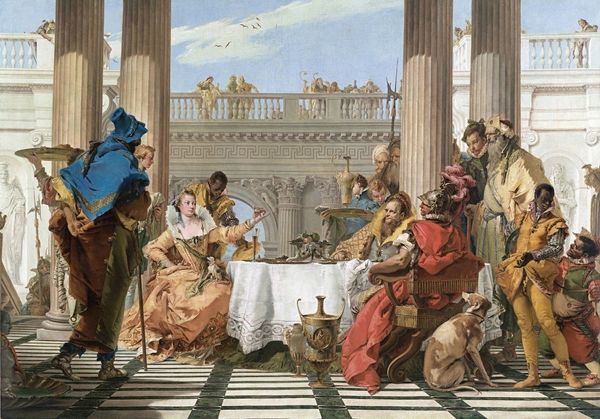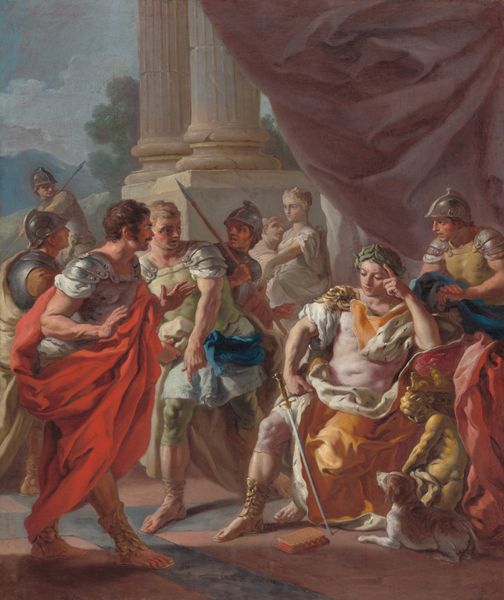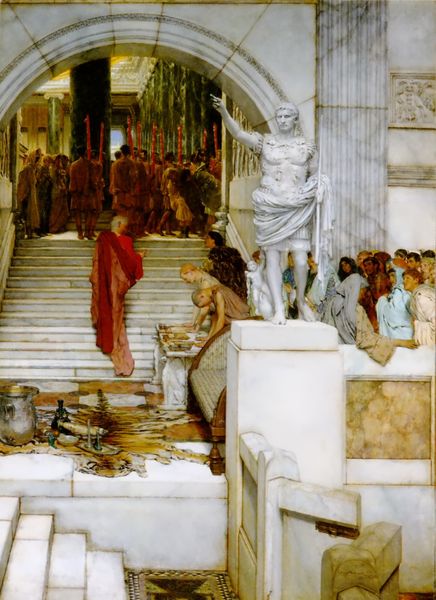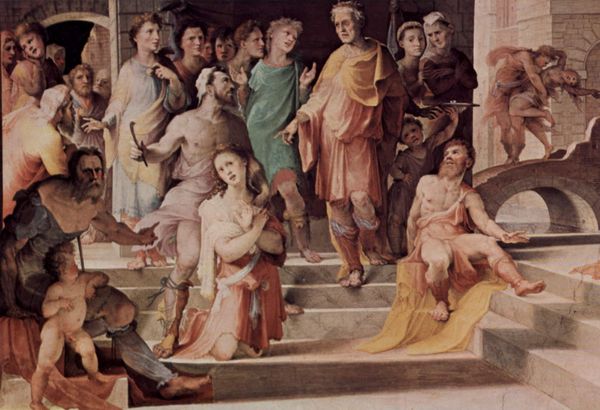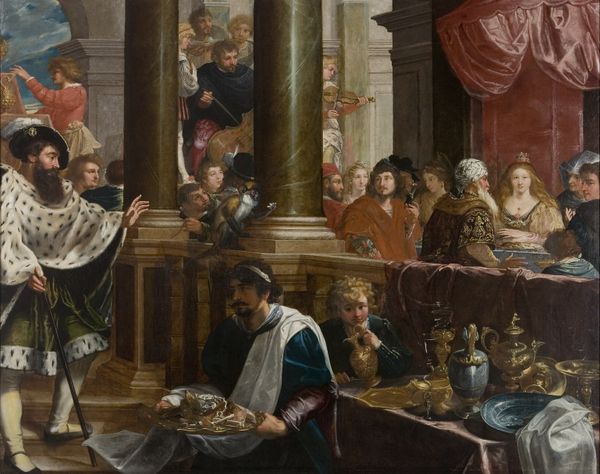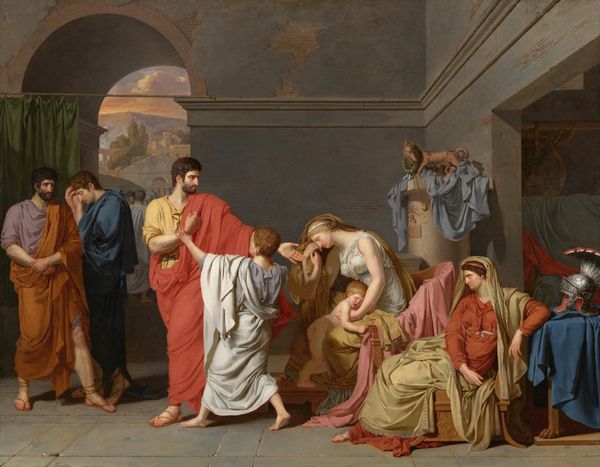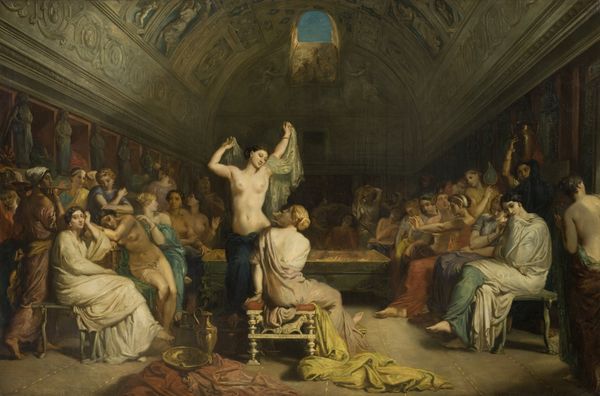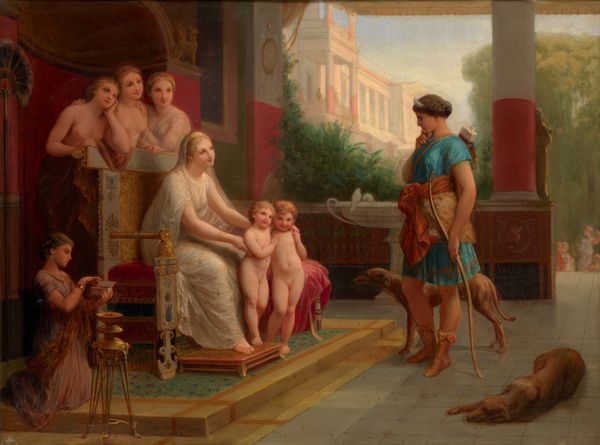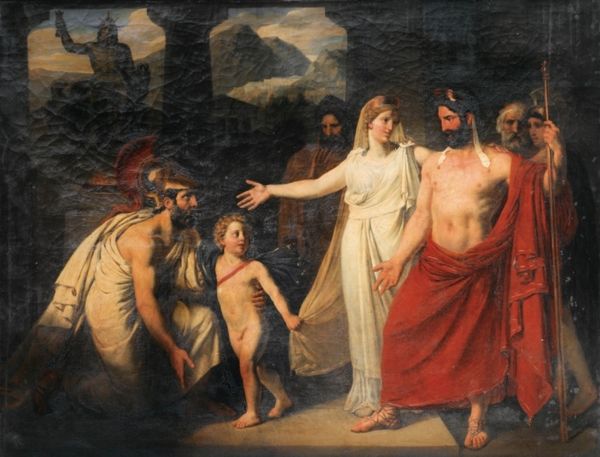
Dimensions: 190.5 cm (height) x 279.5 cm (width) (Netto)
Editor: This is Wilhelm Marstrand’s "The Parable of the Great Banquet," painted in 1869. It's an oil on canvas depicting a biblical scene with a large crowd. It feels very staged and theatrical to me; what stands out to you about it? Curator: What strikes me is the conspicuous display of material disparity. Look closely at the way the guests at the table are adorned compared to those entering. Marstrand’s painting reveals much about the social strata and how access to resources like clothing and food defined status in the depicted era. What are these costumes *made* of, who had access, and what can this tell us about labour at the time? Editor: That’s interesting! So, you're saying the *material* differences—the finer clothes versus the animal skins—highlights social divisions and unequal labor practices of that time? Curator: Exactly! This piece visualizes the mechanics of exclusion and inclusion rooted in material wealth. Note the construction of the architectural background. Class distinctions and the societal means of creating and consuming were all by design, in painting *and* in societal structures. How was the banquet constructed? Editor: Right, like, who provided the food and who served it? Was Marstrand making a statement about this unequal distribution through his choice of medium and subject? Curator: Perhaps. Or perhaps he was simply reflecting his time. But we can *use* his painting to reflect on ours! The cost of paints, brushes, the canvas itself, the labor of the artist. These all reveal an art market. So, let's analyze this through that lens. Editor: I see what you mean. It's not just about the biblical story but about the social conditions of both the painted scene *and* Marstrand's world when he made the painting! Thinking about the production, it adds so many layers. Curator: Precisely! By looking at materials and their contexts, we uncover a deeper understanding of the social dynamics at play and prompt new questions for exploration. Editor: That perspective really shifts how I understand the artwork. I am eager to apply these observations moving forward.
Comments
No comments
Be the first to comment and join the conversation on the ultimate creative platform.
